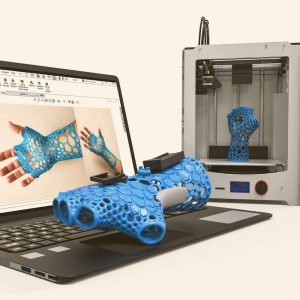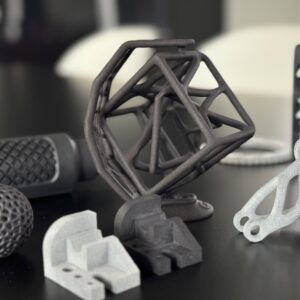Are you looking to bring your innovative ideas to life but facing challenges with traditional manufacturing?
Imagine being able to create complex designs, customise products, or prototype rapidly—all with minimal waste. 3D printing makes this possible.
With BDL 3D’s expert insights, you’ll gain the knowledge and confidence to understand the essentials of 3D printing: how it works, the main technologies, and how additive manufacturing can transform your industry within New Zealand’s dynamic landscape.

What is 3D Printing?
3D printing, also known as additive manufacturing, is revolutionising how products are created, from simple shapes to intricate designs.
- Definition: 3D printing is a process of creating objects layer by layer from digital models, allowing for high precision and minimal waste.
- Key Difference from Traditional Manufacturing: While traditional methods remove material, 3D printing only adds what’s needed, making it more efficient and flexible.
- Main Advantage: Enables complex shapes and reduces waste, making it ideal for both prototypes and final products.
Let’s look deeper at what 3D printing is and how it’s reshaping industries.

How Does 3D Printing Work?
Each step in the 3D printing process is essential to transforming a digital model into a tangible object. Here’s an easy breakdown.
The 3D Printing Process in 4 Simple Steps:
- Design the Model: Begin with a digital 3D model, either created using CAD software or by scanning an existing object.
- Slice the Model: Software divides the model into layers, generating instructions for the printer.
- Rapid Prototyping & Production: With your design and materials finalised, we move into rapid prototyping. This will your concept into a functional prototype.
- Finish the Print: After printing, some parts may need cleaning, curing, dyeing, or other finishing touches.
Each of these steps plays a vital role in bringing your ideas to life.
What are the Key Parts of a 3D Printer?
Understanding these core components can help you achieve the best results with 3D printing.
- Print Bed: The surface where the object is built, which needs to be stable and level.
- Print Head/Nozzle: Applies or cures material layer by layer with high precision.
- Material Feed System: Supplies the material (like filament or powder) consistently.
- Control Interface: Software and controls to adjust settings, making the printing process smoother and more efficient.
By familiarising yourself with these parts, you’ll be better equipped to navigate 3D printing processes.
What are the Different Types of 3D Printing Technology?
Choosing the right 3D printing technology depends on your application, materials, and project needs. Here are three popular options, each offering distinct advantages.
1. Multi Jet Fusion (MJF)
- How it Works: A printhead applies binding agents to powder layers, solidified by heat to create precise shapes. You can find more details about Multi Jet Fusion (MJF).
- Materials: Typically uses nylon; options include glass-filled nylon for added durability.
- Applications: Ideal for functional prototypes, durable end-use parts, and intricate designs.
- Benefits:
- High precision
- Strong and consistent structure
- Fast production times
2. Stereolithography (SLA)
- How it Works: A UV laser hardens liquid resin into solid layers, creating detailed shapes.
- Materials: Uses various resins, suitable for high-detail work.
- Applications: High-detail prototypes and moulds.
- Benefits:
- Smooth surface finish
- Excellent detail and accuracy
3. Selective Laser Sintering (SLS)
- How it Works: A laser fuses powdered materials, allowing for complex structures without needing extra supports.
- Materials: Often nylon and durable powders.
- Applications: Functional prototypes, batch production.
- Benefits:
- Efficient for complex designs
- Ideal for producing multiple parts at once
Each of these technologies offers unique features suited to different project requirements.
What Common Materials are Used in 3D Printing?
From everyday plastics to high-strength metals, each material has unique strengths. Choosing the right one depends on your goals and the product’s intended use.
- Plastics and Polymers:
- PLA: Biodegradable and easy to use, ideal for beginners.
- ABS: Strong and heat-resistant, suitable for functional parts.
- Nylon: Tough and flexible, widely used in industrial applications.
- Metals:
- Stainless Steel, Aluminium, Titanium: High-strength materials for industries like aerospace, medical, and automotive.
- Ceramics and Composites: Ideal for applications needing heat resistance or specific material qualities.
- Bio-Materials: Applied in healthcare, such as implants and prosthetics, where biocompatibility is essential.
Each material has its best use, and the right choice can maximise the performance and durability of your product. At BDL 3D, we only use PA12 Nylon.
How 3D Printing is Used in New Zealand Industries?
Across New Zealand, 3D printing is making a difference in industries from manufacturing to healthcare and education. Here’s how different sectors benefit from this technology.
- Manufacturing and Engineering
- Prototyping: Allows rapid, cost-effective iterations for new products.
- Custom Tools: On-demand creation of specialised tools.
- Architecture and Construction
- Scale Models: Visualises projects for clients in fine detail.
- Innovative Structures: Enables complex designs not feasible with traditional methods.
- Product Design and Development
- Customisation: Provides tailored products for unique needs.
- Small-Batch Production: Cost-effective for limited runs.
- Healthcare and Medical Devices
- Prosthetics: Produces custom-fit limbs and devices.
- Dental Implants: Ensures precision for patient comfort.

- Education and Research
- Projects: Supports hands-on learning and exploration.
- Innovation Hubs: Encourages creativity and experimentation.
What are the Advantages and Disadvantages of 3D Printing?
3D printing has transformed manufacturing and design, offering unique advantages. However, it also comes with some limitations.
Considering both sides helps businesses make the most informed decision when investing in 3D printing.
Advantages of 3D Printing
- Customisation: Easily adjust designs with minimal additional costs.
- Reduced Waste: Adds material only where needed.
- Cost-Effective Prototyping: Great for testing ideas quickly.
- Quick Production: Speeds up time to market.
- Accessibility for SMEs: Enables advanced manufacturing for smaller businesses.
Disadvantages of 3D Printing
- Material Limits: Some materials aren’t suited for 3D printing.
- Size Restrictions: Printers have limited build volume.
- Surface Finish: May require post-processing for a polished look.
- Intellectual Property Risks: Designs can be easily replicated.
- Safety Compliance: Requires adherence to industry standards.
Frequently Asked Questions (FAQs)
What 3D Printing Technology is Best?
- The ideal choice depends on your application, budget, and material needs. MJF, SLA, and SLS each offer unique strengths. Contact BDL 3D to find the best option for your project.
Can I Use a Design Found Online?
- Yes, but make sure you have the right to use it. Many designs are available, but copyright laws vary by source.
How Do I Find a 3D Printing Service?
- BDL 3D offers on-demand 3D printing services across New Zealand. Reach out with your idea to get started.
Which Material Should I Use?
- PLA is great for simple models, while nylon is more robust for functional prototypes. Our team can guide you in choosing the right material.
What Does 3D Printing Cost?
- Costs vary by technology, material, and design complexity. Contact us for a free quote.
Are There Restrictions on 3D Printing?
- Yes, certain designs (e.g., weapons) may have legal restrictions. Always check regulations and intellectual property laws.
With this guide, we hope you feel empowered to explore the possibilities of 3D printing. If you need any expert advice, tailored solutions, and hands-on assistance, reach out today!

